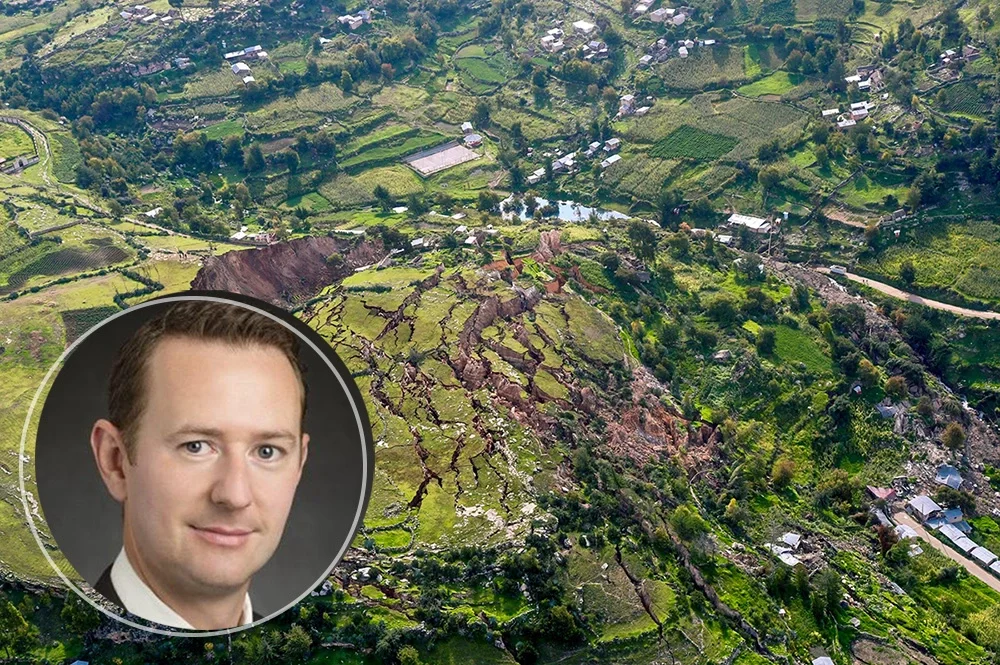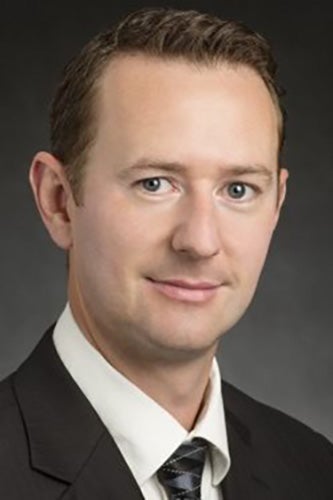

Now in his 10th year at the University of Illinois, Simon Rogers studies rheology, the science of how materials flow and deform. The professor of chemical and biomolecular engineering and native of New Zealand is highly respected in his field, being awarded the Arthur B. Metzner Early Career Award from the Society of Rheology in 2022. He is editor-in-chief of Rheologica Acta, the journal of the European Society of Rheology.
Why is your research important?
(My research with my students) has impact in industrial, biomedical, and environmental applications, making it loads of fun. We have spent the last few years paying particular attention to how materials “yield,” how they turn from solids into liquids under load. This has impact on things like avalanches and 3D printing and involves us understanding not just how materials behave across a wide range of length and timescales, but also how we can process them effectively and efficiently. Our studies involve theory, experiments, and analysis. These topics provide a chance for my students and me to develop a wide range of skills. It’s the combination of the wide range of applications, the fundamental physics we get to learn, as well as the educational components that make these studies so much fun. By performing these studies, we serve the fundamental mission of the university as well as participating in the broader commitment of our community to enhance quality of life by better understanding the world in which we live.
What’s particularly challenging about this field?
A significant challenge our research community has faced in the last few decades has been the ability to determine when materials yield and how we can tell. It’s difficult to understand the underlying cause of something we can’t accurately and unambiguously measure! My group and I made progress in this area by going back through historical literature and checking which of the commonly made assumptions are justified and which can be rigorously tested. We found that simple experiments performed in a novel way could shed light on these problems and solve many of the outstanding problems we originally faced. In this case, knowing the context within which modern literature was written was important, because it allowed us to see where assumptions were made and how to evaluate a new way forward.
What kinds of lessons do you find are most important for your students?
It can be just as important to understand why researchers were studying a problem as to what they found. Understanding the context, the motivation, for a study can be a great indicator of the direction a field is going and allow for the formation of competing hypotheses that can be tested, or new ways to test aspects of commonly held hypotheses.

What was one of your first jobs? Did the experience play a role in you becoming a professor?
I worked in a foam factory not far from my home in New Zealand. The way that material behaviors dictated how they were used was really interesting, and working in a factory made me realize how much I valued the ability to be creative.
What is your proudest or most significant achievement? How did it affect your career?
I’m proud of all the achievements of all of my students from my time at Illinois. They’ve all taught me things that have influenced the way future students and I approach problems. The one that runs strongest through the history of my group started with one of my first students and continues to be a major topic of development in my group to this day. Making a simple observation, that some deformation is recoverable and some is not, forced us to reevaluate many of the formalisms that are used in rheology. This simple observation has allowed us to develop new experimental measures that have led to new theoretical models that have, in turn, allowed us to discover new physics in how some materials behave. These ideas are now influencing researchers around the world, which I consider to be my group’s most significant impact.
Editor’s notes: Watch a video of a student interview with Simon Rogers as part of the 940 Feet video series here. See more LAS Experts profiles here.


